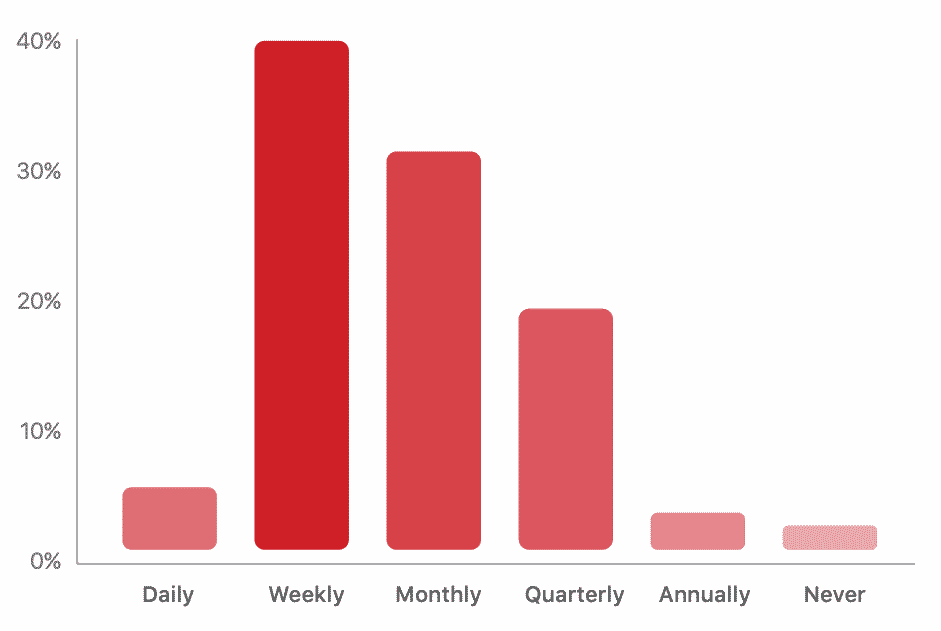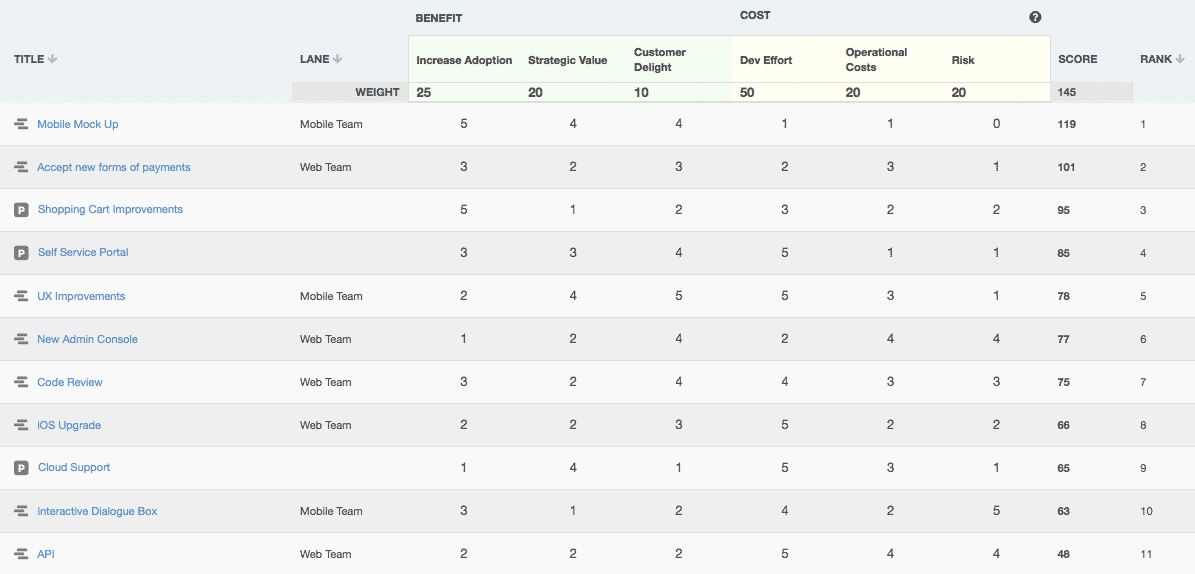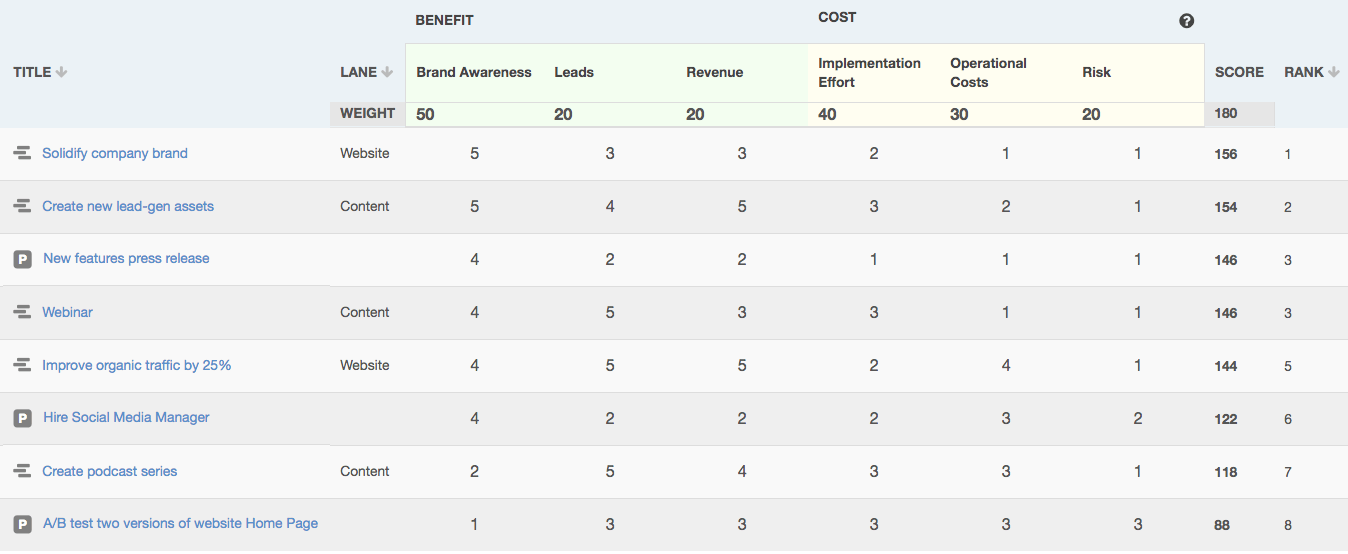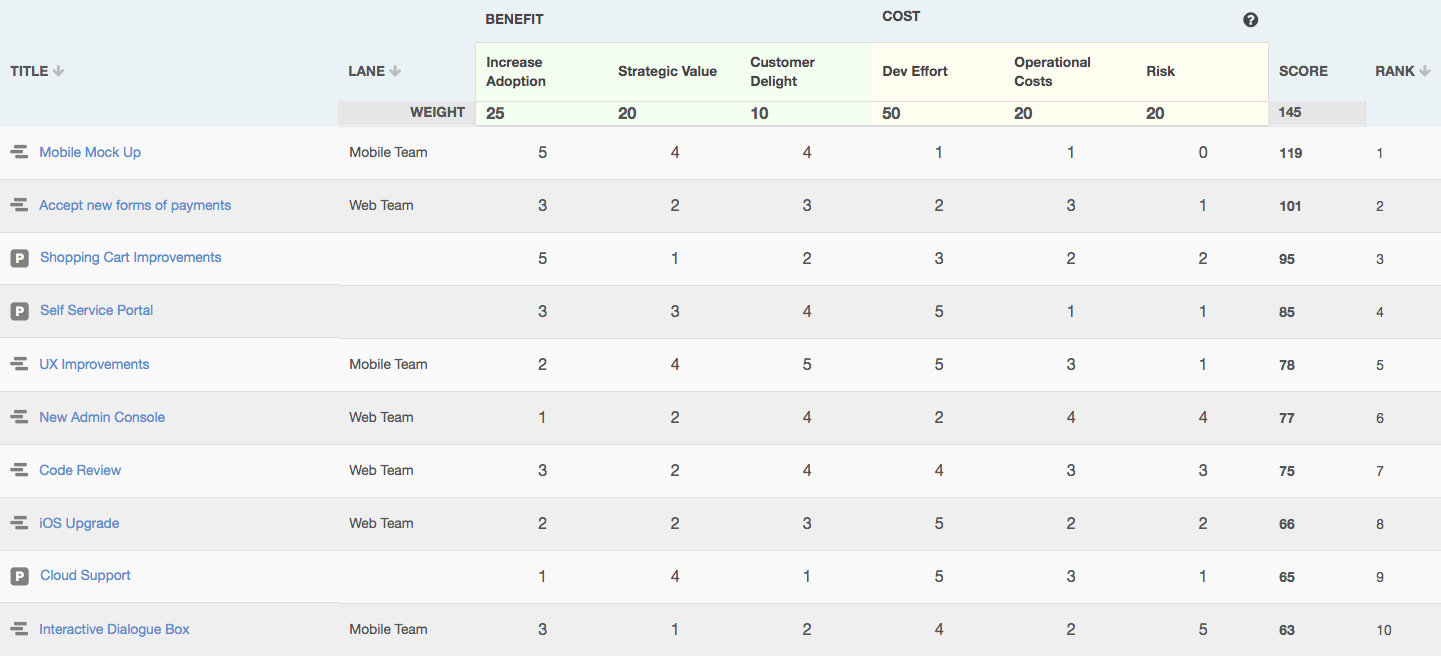More than 40% of product managers today re-prioritize the initiatives in their backlogs every week. That’s what we found out when we surveyed over 1,300 product professionals for our 2019 Product Planning Report. If you’re a product manager, this stat should serve as a helpful reminder about two essential aspects of your role.
3 Prioritization Matrix Examples for Your Team
How Often Do You Re-Prioritize Items in Your Product Backlog?
First, an organization’s priorities can shift so quickly and so often today that an intelligent PM needs to keep a watchful eye at all times on both external realities and internal realities. Your team’s situation today might demand a shift in product priorities from the plan you carefully reviewed and agreed on even a few weeks ago.
Second, because your product’s priorities can shift quickly and often, you must begin your product development by first mapping out an initial set of strategically sound priorities. It would be much trickier to re-examine and adjust your priorities once your team is in the middle of development if you didn’t have a solid strategic foundation for your product’s priorities in the first place.
All of this brings up the question: How does your team set priorities today? Do you have a straightforward, strategic process for separating the must-have items from the nice-to-haves, determining what should go first, or figuring out what initiatives will deliver the most significant strategic advantage for your company?
Why Prioritizing Can Be Such a Challenge
Statistically speaking, we’d guess your team finds prioritizing initiatives to be challenging. In our 2019 Product Planning Report, we found nearly a third (30%) of product professionals describe their single greatest product management challenge as “Getting consensus on product direction.”
Why is this? Why is it so difficult for product teams to agree on a plan for their product and then, based on that plan, to agree on which specific initiatives should get developed in what order?
One reason we at ProductPlan have found for this, after working with thousands of product professionals worldwide, is that few teams have a strategically sound basis for arranging their products’ priorities in the first place.
Some start entirely with their intuition (an essential tool for a PM, but not the only tool). Others compile data-driven evidence that, say, a specific feature would add value to the product but then have no way of determining how the value of that feature (or the costs to build it) compares to the potential value (and costs) of other features also under consideration.
One great way to turn the largely subjective process of deciding what initiatives “matter” most to your product into a more systematic, objective method is to use a weighted scoring model. Let’s look at a few examples of what this would look like.
A Systematic Strategy: Using Weighted Scoring in Your Prioritization Matrix
With ProductPlan’s Planning Board, your team can use a weighted scoring model to measure features or other initiatives against one another by assigning scores across several key criteria—such as cost, revenue potential, or risk—for each initiative.
This will help you arrive at a much more systematically derived set of priorities. The weighted scoring model can be a valuable tool for setting priorities that can work for any group or initiative at your organization—not just your product team.
Here are three example prioritization matrices using the weighted scoring model—for a marketing team, a product team, and an enterprise IT department.
Prioritization Matrix Example: Product
In the example above (a screenshot of ProductPlan’s Planning Board), a product team has used the Planning Board for weighing a set of initiatives (shopping cart improvements, a mobile mockup, etc.) against each other across a custom set of benefits and costs.
As you can see here, the team determined that developing a “mobile mockup” was the top priority at the time—but only after weighing the benefits (increased adoption, strategic value, and customer delight) against the costs for working on this initiative (effort, operational costs, and risk), AND against other initiatives, such as a new admin console and a self-service portal.
Also, because they built this prioritization framework in a web app designed for crafting and sharing strategic plans, this product team will quickly and easily update this scoring model as often as they need to.
Prioritization Matrix Example: Marketing
As you can see from the screen above, a marketing team can use this prioritization framework to figure out how to deploy its limited resources for the greatest return on investment. This team has created a custom set of benefits (such as brand awareness and new leads) and potential costs (such as operational costs and implementation effort) and assigned scores for several possible initiatives like creating new lead-generation assets and hiring a social media manager.
This weighted scoring approach can work for a department’s ongoing efforts and any specific initiative.
However, keep in mind that these realities can change at any time, as we pointed out earlier. For example, the executives might freeze all new hiring, meaning the “Hire a social media manager” initiative should be dropped in priority, temporarily. Because this can happen often, you must use the right tool to build your weighted scoring prioritization models, so you can quickly and easily adjust these scores when needed.
Prioritization Matrix Example: Enterprise IT
Finally, to show you just how valuable the weighted scoring model can be across your organization, here is an example of how an IT department can use such a framework for prioritizing its initiatives.
As you can see here, the IT team has a different set of benefits from those of other groups in the company—benefits such as how much a given initiative could save the organization and whether implementing it will help improve its overall digital security compliance with privacy regulations.
Start Using the Weighted Scoring Model to Prioritize Your Initiatives
If you want to see how easy it is to apply the weighted scoring model in the Planning Board, check out our brief video walkthrough below. And if you’d like to start prioritizing your initiatives using the weighted scoring approach now, we can help you get started.







